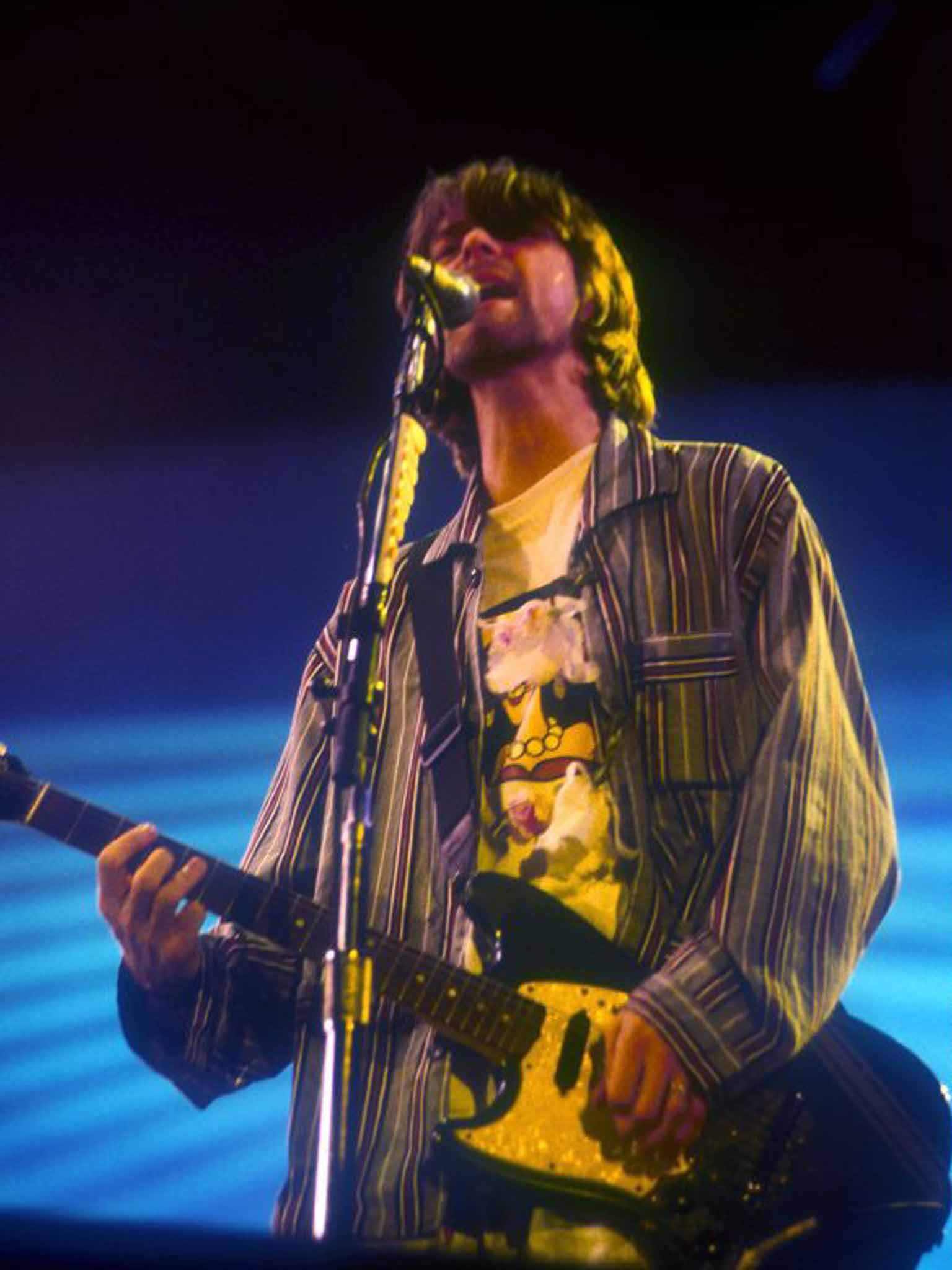Kurt Cobain's life and death: Montage of Heck film uses unseen footage to tell Nirvana frontman's story
Brett Morgen's 'Cobain: Montage of Heck' debunks many of the myths surrounding the singer – including why he killed himself

Foo Fighters leading man Dave Grohl sat on the sidelines for two years refusing to take part in a documentary about his ex-Nirvana band mate Kurt Cobain, only to change his mind just as Brett Morgen's film Cobain: Montage of Heck received universal praise at it's world premiere in Sundance.
Cobain: Montage of Heck, to be released in the UK next month, is the first authorised documentary on the Nirvana frontman. One of the producers is Frances Bean Cobain, Cobain's daughter with Courtney Love, who was 19 months old when her father committed suicide on 5 April, 1994. Containing never-before-seen-footage from his childhood and of Kurt and Courtney together in the privacy of their own home, where they are seen laughing and joking about Love being one of the most hated women in America. Their playfulness in front of the camera has a soap opera feel.
The film does much to debunk many of the myths about Cobain. Morgen suggests Cobain began using heroin in his teenager years and was not introduced to the drug by Love and questions whether he committed suicide because he hated being famous.
The film features only a handful of talking-head interviews, mainly with his family. Interviewed on-screen are Kurt's mother, Wendy O'Connor, father Donald Cobain, stepmother Jenny Cobain, sister Kim Cobain, his first serious girlfriend, Tracy Marander, and Courtney Love. The only musician interviewed is Krist Novoselic, the bassist and co-founder of Nirvana.
The title of the film is taken from two demo tapes that Cobain recorded around 1988, one eight minutes long and the other 36 minutes, titled Montage of Heck. The mix tapes, which have been available on bootleg for more than 15 years and freely available on the internet, feature music from Cobain's record collection, elements of Nirvana demos and songs recorded by Cobain. Much of the soundtrack to the film is taken from these demos and none of music in the film has ever been officially released. The one great musical discovery made by Morgen when shifting through 200 hours of private family audiotapes is an acoustic cover of the Beatles' "And I Love Her".
Dave Grohl joined Nirvana after the release of their debut album, Bleach, and the departure of drummer Chad Channing. He was spotted by Novoselic and Cobain in the punk band Scream and joined to record Nevermind in 1991, which gave birth to the Seattle grunge music scene.
Speaking after the Berlin Film Festival European premiere of Cobain: Montage of Heck, director Morgen revealed that he might re-edit the film, after Grohl indicated he would now like to add his voice to the Cobain story: "Dave Grohl was recording an album when we were doing interviews and wasn't available. I was fine with that because it's not the type of movie where everyone who knew Kurt was interviewed; it's intimate and I thought that Krist Novoselic would represent Nirvana. Then Dave's management called after I'd locked the picture two weeks before the premiere, but there was not enough time to add his voice and so I will go back to explore integrating him in the film."
Even without Grohl's inclusion, the film has been universally praised. Rolling Stone magazine said: "It's an eight-years-in-the-making collective labour of love that offers a private peek into the artist's mind, from the first creative stirrings to the spiral downward."
The praise is deserved. Morgen was given access to private family tapes and audio footage. Frances Bean Cobain, who has no memory of her father, can be seen in the film in archival footage. There is one scene in which the singer is cutting her hair while seemingly high and an intimate moment when Cobain is bathing his daughter and tells Love: "I feel happy right now." Yet it's when seeing Cobain as a father that the ill effects of his drug abuse become most obvious.
Enjoy unlimited access to 100 million ad-free songs and podcasts with Amazon Music
Sign up now for a 30-day free trial. Terms apply.
ADVERTISEMENT. If you sign up to this service we will earn commission. This revenue helps to fund journalism across The Independent.
Enjoy unlimited access to 100 million ad-free songs and podcasts with Amazon Music
Sign up now for a 30-day free trial. Terms apply.
ADVERTISEMENT. If you sign up to this service we will earn commission. This revenue helps to fund journalism across The Independent.
The film uses animation with the audio to restage moments of Cobain's life. The most intriguing animated re-enactment is the revelation that Cobain's overdose in Rome in 1991 was not his first suicide attempt. After he lost his virginity, news spread through his school. Humiliated, he sat on train tracks in the hope that a train would run him over. Indeed, humiliation is the key word of the film, and Morgen's film suggest that it was a sense of shame when the singer suspected Love of cheating on him that was a more likely cause of his suicide.
"When he went down to the train tracks to kill himself, it wasn't that he was killing himself because he was depressed and suicidal, it was because he couldn't handle the ridicule," says Morgen. "Also this whole idea that Kurt killed himself because he didn't want to be famous, he certainly propagated that by putting it in his suicide letter, but there is nothing going through the materials that would lead you to that suicide letter. That seemed like an absolute anomaly."
'Kurt Cobain: Montage of Heck' is released on 10 April
Join our commenting forum
Join thought-provoking conversations, follow other Independent readers and see their replies
Comments
Bookmark popover
Removed from bookmarks